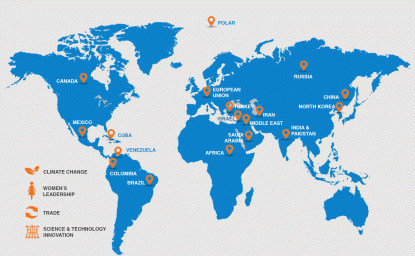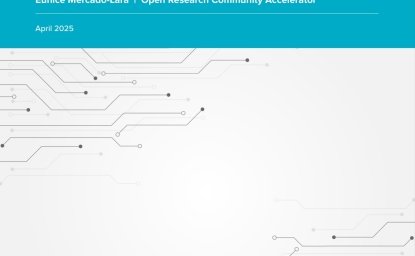The Latest
Science and Technology Innovation challenges:
- Improving the STEM pipeline
- Increasing innovation
- Appointing a Director of Open Innovation in the Office of Science and Technology Policy (OSTP)
Q: What is the greatest challenge facing the Science and Technology Innovation community?
A: United States’ leadership in science and technology innovation has been shrinking steadily since the 1970’s, while China continues to accelerate investments in federal research and development (R&D). To catch up, the U.S. needs to better support basic research at universities and laboratories, as well as applied R&D, to increase America’s capacity for science and technology innovation.
This requires improving the Science, Technology, Engineering and Mathematics (STEM) pipeline to produce more researchers, including women and minorities, who can drive innovation. Part of this pipeline is also ensuring the flow of qualified workers from abroad: 40% of Fortune 500 companies are founded by immigrants or first generation citizens.
While innovation is often driven through competition, we must also coordinate with other global leaders to ensure shared priorities are met. Finally, we need to expand the role of the public in science and technology policy and innovation.
Q: What will President-elect Trump need to do to manage these obstacles or expectations?
A: U.S. federal agencies should be encouraged to fund basic research in fields including biology, physics, chemistry, and engineering. At the same time, private sector innovation should be supported through expanded Small Business Innovation Research (SBIR) and Small Business Technology Transfer (STTR) programs designed to help bring emerging technologies to market.
Energy innovation should be established as a policy priority for American R&D, and also as a shared priority as demonstrated through bilateral agreements with countries that have advanced research infrastructure in these areas. If the U.S, fails to demonstrate a path forward for clean energy, China and India will not feel the pressure to continue developing clean energy as well.
Many emerging technologies, such as those that advance the fields of genomics and artificial intelligence, raise important questions of safe and equitable development. Programs designed to engage the public in discussions about science and technology policy, such as the Expert & Citizen Assessment of Science and & Technology (ECAST), provide a venue for collaboratively evaluating the risks and benefits of emerging technologies. The public can also be engaged through different models of open innovation including citizen science, crowdsourcing, and prize and challenge competitions.
Q: How can the Trump Administration use citizen science and other forms of open innovation?
A: In citizen science, the public participates voluntarily in the scientific process, addressing real-world problems in ways that may include formulating research questions, conducting scientific experiments, collecting and analyzing data, interpreting results, making new discoveries, developing technologies and applications, and solving complex problems. This method makes innovation cheaper and more effective; researchers at the University of Washington recently quantified volunteer contributions to biodiversity research at $2.5 billion.
The Trump administration should appoint a Director of Open Innovation in the Office of Science and Technology Policy (OSTP) to continue to harness this important method. The administration could then holistically apply citizen science to a national challenge like tracking and eradicating Zika. GLOBE, a citizen science project supported by NASA, recently developed a mosquito monitoring protocol to identify the vector that carries the Zika virus in the Gulf of Mexico. Some concerned citizens, including students, teachers and scientists, are already monitoring and tracking vectors using GLOBE’s protocol. Having more eyes on the problem means faster and more efficient identification, intervention and eventual eradication of the larvae that will eventually transfer the Zika virus.
Guests


Explorer Fellow with the National Geographic Society in the Citizen Explorer Labs

Science and Technology Innovation Program
The Science and Technology Innovation Program (STIP) serves as the bridge between technologists, policymakers, industry, and global stakeholders. Read more

Explore More
Browse Insights & Analysis
What Does the World Expect of President-elect Trump?

How Our Unhealthy Cybersecurity Infrastructure Is Hurting Biotechnology




